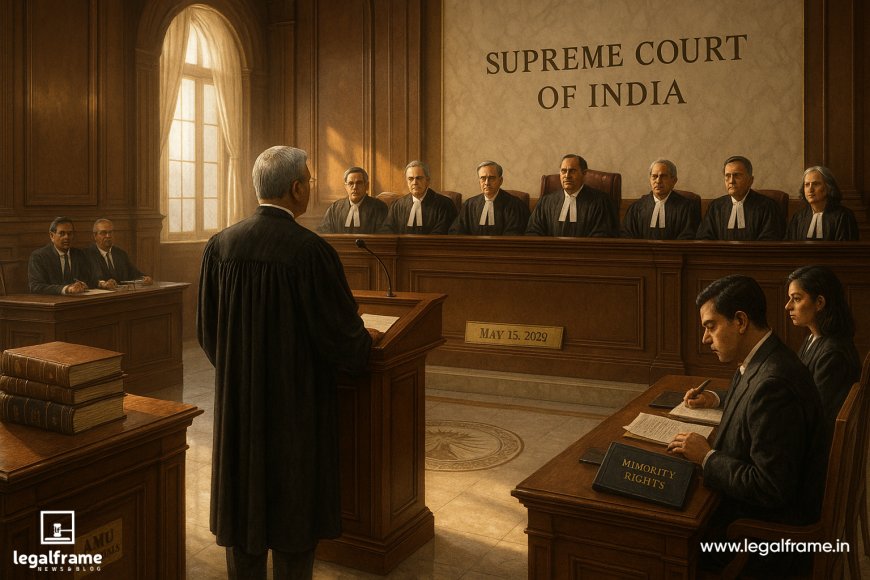Not Just About the CJI: Justice Gavai’s Full Court Stand Rekindles Debate Over AMU Bench Referral

The landmark judgment of the Supreme Court in Aligarh Muslim University through its Registrar Faizan Mustafa v. Naresh Agarwal (2024 INSC 856), overruling the 1967 decision in S. Azeez Basha v. Union of India, has not only revived the debate over minority rights in educational institutions but also ignited critical discussion around judicial procedure and the role of the Chief Justice of India (CJI) in bench formation.
The case, which arose from a reference made in 1981 in Anjuman-e-Rahmaniya, came before a 7-judge Constitution Bench, bypassing the usual step of consideration by a Three-Judge Bench. In Rahmaniya, a Two-Judge Bench had questioned the correctness of the five-judge Azeez Basha decision and suggested its reconsideration by a larger bench raising fundamental issues about judicial hierarchy and propriety.
Dissenting judges—Justices Surya Kant, Dipankar Datta, and Satish C. Sharma held that such a referral from a smaller bench was procedurally flawed. Justice Kant emphasized that a Division Bench lacks the authority to question the ruling of a Constitution Bench and cannot indicate the strength of the bench that should decide the matter. He noted that such a move intrudes into the exclusive administrative prerogative of the Chief Justice of India as the master of the roster.
Justice Datta expressed concern that Rahmaniya dealt with a different statutory context altogether and that the reference should have first been considered by a Three-Judge Bench, in keeping with settled judicial practice.
However, the majority judgment led by Chief Justice Dr. D.Y. Chandrachud upheld the legality of the referral and strongly affirmed the CJI’s administrative discretion to assign matters to benches of any strength. The majority noted that such discretion flows from the CJI's constitutional role and is essential for judicial functioning.
This procedural justification has come under sharper public scrutiny, especially in light of recent public remarks by Chief Justice BR Gavai himself, where he emphasized that the Supreme Court is a court of all the judges and not a CJI-centric institution. In an effort to promote transparency and decentralization, the CJI has repeatedly expressed that key decisions must reflect collective judicial will rather than being unilateral.
Further reinforcing this ethos of institutional collaboration, Chief Justice Gavai, who assumed office in May 2025, has also echoed similar sentiments. He highlighted in a public address that immediately upon taking office, he convened a meeting of the Full Court, and ensured that all important administrative decisions were made collectively. Specifically referring to the decisions taken on May 15, 2025, CJI Gavai stressed that those decisions were “of the entire Supreme Court and not just of CJI Gavai.”
This statement has added weight to the call for shared responsibility and transparency in the Court's internal functioning, especially regarding bench composition in constitutional references. Critics argue that despite these progressive affirmations, the majority’s validation of the Rahmaniya reference reinforces a CJI-centric administrative model, revealing a subtle dissonance between principle and practice.
The seven-judge bench ultimately refrained from declaring AMU a minority institution, stating that the matter must now be decided by a regular bench based on the constitutional criteria laid down in the judgment.
While the ruling is a major milestone in clarifying minority rights under Article 30(1), the procedural and institutional questions it has raised are likely to have long-term implications for how judicial discipline, internal governance, and CJI authority are balanced in the Supreme Court of India.
What's Your Reaction?































